Category
Popular Articles
- AI (9)
- Android (35)
- App Suggest (4)
- Apple (5)
- Apple TV (2)
- Bluetooth (2)
- Cars (2)
- ChatGpt (1)
- Did you know? (1)
- E-Commerce News (1)
- Ecommerce Websites business (7)
- Electronics Shopping (5)
- Fashion Tips (3)
- Gaming (3)
- Google Gemini (3)
- Hair Care Tips (2)
- How to (13)
- iCloud (1)
- Infotainment System (1)
- Iphone (93)
- Job Posting (1)
- Mac (18)
- Mobile Games (1)
- Netflix (1)
- Online Shopping Websites (2)
- Product Reviews (3)
- Roku TV (4)
- Samsung (7)
- Shopping Tips (10)
- Tech (58)
- Windows 11 (4)
Discounted Products
-
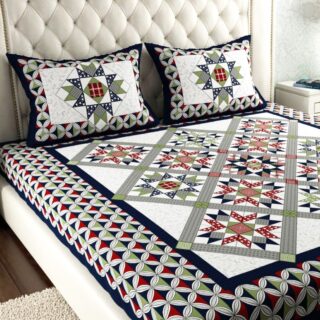 Leo Creation 144 TC Cotton Double Jaipuri Prints Flat Bedsheet(Pack of 1, Blue, Gree, Red, Grey, Light Grey)
Leo Creation 144 TC Cotton Double Jaipuri Prints Flat Bedsheet(Pack of 1, Blue, Gree, Red, Grey, Light Grey)
₹2,999.00Original price was: ₹2,999.00.₹329.00Current price is: ₹329.00. -
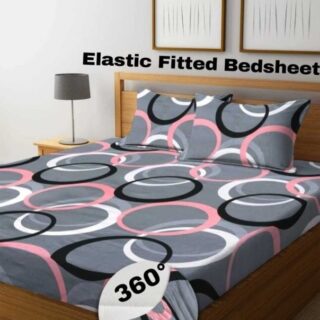 Home Garage 210 TC Cotton King Floral Fitted (Elastic) Bedsheet(Pack of 1, Grey)
Home Garage 210 TC Cotton King Floral Fitted (Elastic) Bedsheet(Pack of 1, Grey)
₹999.00Original price was: ₹999.00.₹299.00Current price is: ₹299.00. -
 Goodrik 140 TC Cotton Double 3D Printed Flat Bedsheet(Pack of 1, Brown)
Goodrik 140 TC Cotton Double 3D Printed Flat Bedsheet(Pack of 1, Brown)
₹499.00Original price was: ₹499.00.₹229.00Current price is: ₹229.00. -
 GLOBALSHOP 350 TC Microfiber Double Floral Flat Bedsheet(Pack of 1, Multicolor)
GLOBALSHOP 350 TC Microfiber Double Floral Flat Bedsheet(Pack of 1, Multicolor)
₹1,250.00Original price was: ₹1,250.00.₹263.00Current price is: ₹263.00. -
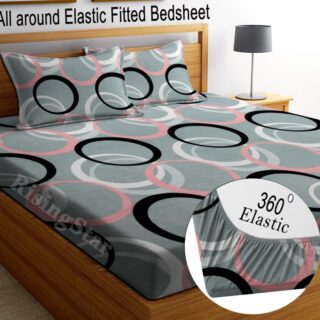 RisingStar 250 TC Microfiber King Printed Fitted (Elastic) Bedsheet(Pack of 1, FITTED-ROUND-CIRCLES-PREMIUM)
RisingStar 250 TC Microfiber King Printed Fitted (Elastic) Bedsheet(Pack of 1, FITTED-ROUND-CIRCLES-PREMIUM)
₹2,299.00Original price was: ₹2,299.00.₹299.00Current price is: ₹299.00. -
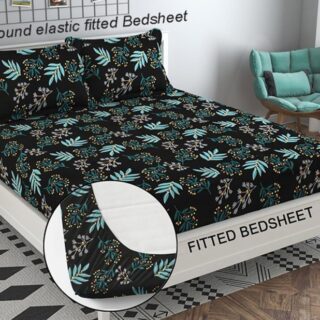 Home Garage 210 TC Cotton King Floral Fitted (Elastic) Bedsheet(Pack of 1, Fitted Black Green)
Home Garage 210 TC Cotton King Floral Fitted (Elastic) Bedsheet(Pack of 1, Fitted Black Green)
₹1,299.00Original price was: ₹1,299.00.₹299.00Current price is: ₹299.00. -
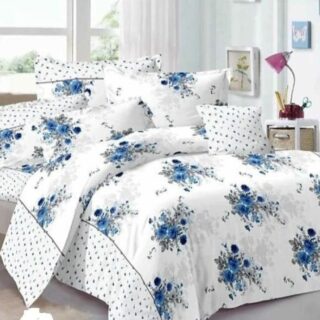 Home Garage 180 TC Cotton King 3D Printed Flat Bedsheet(Pack of 1, White)
Home Garage 180 TC Cotton King 3D Printed Flat Bedsheet(Pack of 1, White)
₹999.00Original price was: ₹999.00.₹229.00Current price is: ₹229.00. -
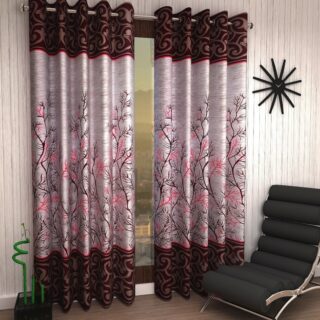 Home Sizzler 153 cm (5 ft) Polyester Room Darkening Window Curtain (Pack Of 2)(Floral, Maroon)
Home Sizzler 153 cm (5 ft) Polyester Room Darkening Window Curtain (Pack Of 2)(Floral, Maroon)
₹799.00Original price was: ₹799.00.₹299.00Current price is: ₹299.00. -
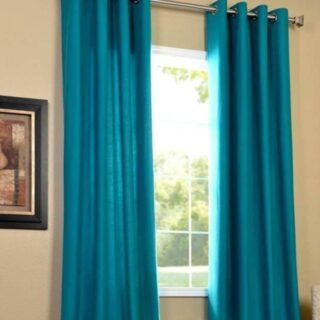 Panipat Textile Hub 152.4 cm (5 ft) Polyester Window Curtain (Pack Of 2)(Solid, Aqua)
Panipat Textile Hub 152.4 cm (5 ft) Polyester Window Curtain (Pack Of 2)(Solid, Aqua)
₹1,899.00Original price was: ₹1,899.00.₹299.00Current price is: ₹299.00. -
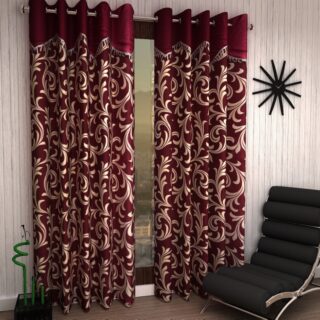 Home Sizzler 214 cm (7 ft) Polyester Semi Transparent Door Curtain (Pack Of 2)(Floral, Maroon)
Home Sizzler 214 cm (7 ft) Polyester Semi Transparent Door Curtain (Pack Of 2)(Floral, Maroon)
₹1,199.00Original price was: ₹1,199.00.₹399.00Current price is: ₹399.00. -
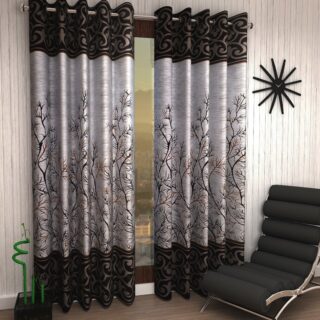 Home Sizzler 153 cm (5 ft) Polyester Room Darkening Window Curtain (Pack Of 2)(Floral, Brown)
Home Sizzler 153 cm (5 ft) Polyester Room Darkening Window Curtain (Pack Of 2)(Floral, Brown)
₹799.00Original price was: ₹799.00.₹299.00Current price is: ₹299.00. -
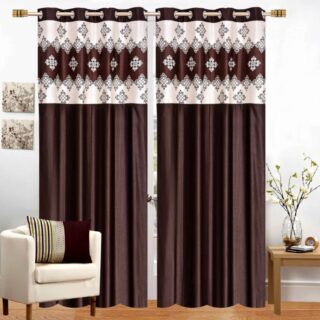 Stella Creations 214 cm (7 ft) Polyester Room Darkening Door Curtain (Pack Of 2)(Abstract, Brown)
Stella Creations 214 cm (7 ft) Polyester Room Darkening Door Curtain (Pack Of 2)(Abstract, Brown)
₹1,299.00Original price was: ₹1,299.00.₹449.00Current price is: ₹449.00. -
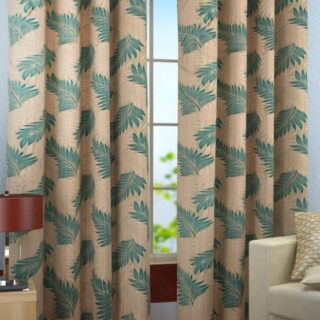 Homefab India 152.5 cm (5 ft) Polyester Room Darkening Window Curtain (Pack Of 2)(Floral, Light Blue)
Homefab India 152.5 cm (5 ft) Polyester Room Darkening Window Curtain (Pack Of 2)(Floral, Light Blue)
₹1,199.00Original price was: ₹1,199.00.₹319.00Current price is: ₹319.00. -
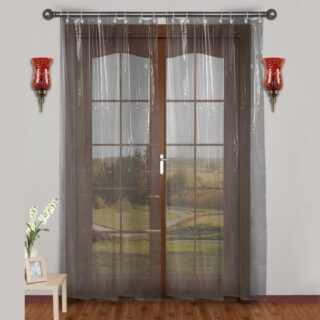 Urban Home 214 cm (7 ft) PVC Transparent Door Curtain Single Curtain(Solid, Off White)
Urban Home 214 cm (7 ft) PVC Transparent Door Curtain Single Curtain(Solid, Off White)
₹699.00Original price was: ₹699.00.₹203.00Current price is: ₹203.00. -
 Panipat Textile Hub 213 cm (7 ft) Polyester Door Curtain (Pack Of 2)(Solid, Brown)
Panipat Textile Hub 213 cm (7 ft) Polyester Door Curtain (Pack Of 2)(Solid, Brown)
₹1,199.00Original price was: ₹1,199.00.₹349.00Current price is: ₹349.00.
Affiliate Links
Promotion
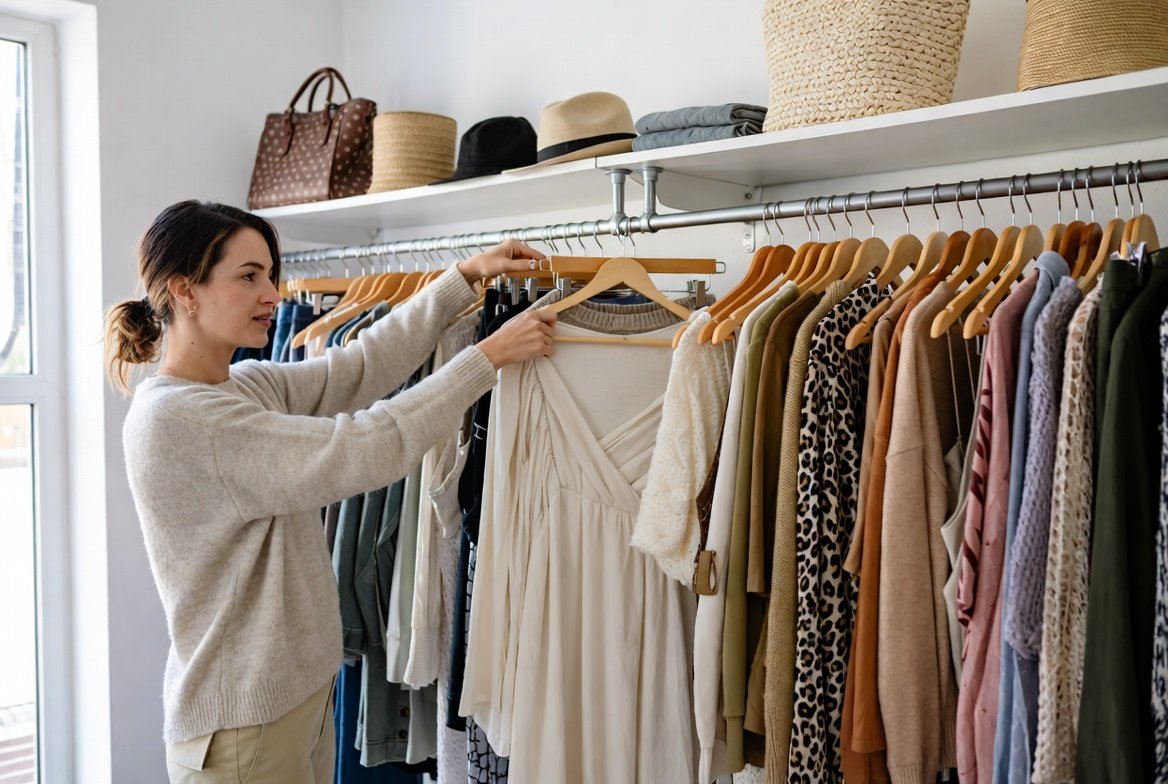
By Jessica
Introduction: Fashion with Purpose
Fashion is more than just clothing — it’s identity, culture, and self‑expression. But it’s also one of the most resource‑intensive industries in the world. Every year, millions of tons of textiles end up in landfills, and clothing production contributes significantly to global carbon emissions. For many people, the idea of “sustainable fashion” feels intimidating or expensive. Isn’t eco‑friendly clothing only for those with big budgets?
The truth is, building a sustainable wardrobe doesn’t require luxury labels or endless spending. It requires intention, creativity, and a willingness to rethink how we approach clothing. As a marketing manager, mom of two, and someone who values sustainable living, I’ve learned that a conscious wardrobe is less about buying new things and more about making smarter choices with what we already have.
This guide will walk you through practical steps, creative hacks, and budget‑friendly strategies to help you create a wardrobe that reflects your values, supports the planet, and keeps your wallet happy.
Part 1: Rethink What You Already Own
The most sustainable wardrobe is the one you already have. Before buying anything new, take inventory of your closet.
- Declutter mindfully: Separate clothes into categories — keep, donate, repurpose.
- Rediscover hidden gems: That blouse you haven’t worn in years might pair beautifully with jeans or a skirt.
- Repair and refresh: A missing button or loose hem doesn’t mean the end of a garment. Simple fixes extend life.
This step is about shifting mindset: sustainability starts with appreciating and maximizing what’s already in your possession.
Part 2: Shop Second‑Hand
Thrift stores, consignment shops, and online resale platforms are treasure troves for affordable, sustainable fashion.
- Thrift stores: Local shops often carry unique pieces at low prices.
- Online resale apps: Platforms like Poshmark, Depop, or ThredUp make second‑hand shopping easy.
- Clothing swaps: Organize swaps with friends or community groups — it’s fun, free, and eco‑friendly.
Buying second‑hand reduces demand for new production and keeps clothes out of landfills.
Part 3: Prioritize Quality Over Quantity
Fast fashion thrives on cheap, disposable clothing. Instead, focus on fewer, higher‑quality pieces that last longer.
- Natural fabrics: Cotton, linen, and wool are durable and biodegradable.
- Timeless styles: Neutral colors and classic cuts never go out of fashion.
- Cost per wear: A $50 jacket worn 100 times is more affordable than a $20 top worn twice.
Part 4: Embrace Capsule Wardrobes
Capsule wardrobes — small collections of versatile pieces — simplify dressing and reduce overconsumption.
- Choose basics: Jeans, white shirts, neutral sweaters.
- Mix and match: Each piece should pair with multiple others.
- Seasonal rotation: Adjust capsules for summer, winter, or work vs. casual.
Capsules save money, reduce clutter, and encourage intentional shopping.
Part 5: DIY and Upcycling
Jessica’s DIY side loves this part. Upcycling transforms old clothes into new favorites.
- Add patches or embroidery: Personalize jeans or jackets.
- Crop or tailor: Turn long dresses into chic skirts.
- Tie‑dye or fabric paint: Refresh faded items with creativity.
DIY projects make fashion fun, unique, and sustainable.
Part 6: Mindful Shopping Habits
When buying new, be intentional.
- Research brands: Look for eco‑friendly certifications or transparent supply chains.
- Buy less, choose well: Ask yourself, “Will I wear this 30 times?”
- Avoid impulse buys: Wait 24 hours before purchasing — often, the urge fades.
Part 7: Affordable Sustainable Brands
Contrary to belief, sustainable fashion isn’t always expensive. Many brands offer eco‑friendly options at reasonable prices.
- Everlane: Transparent pricing and ethical production.
- Patagonia: Durable outdoor wear with repair programs.
- Target’s eco‑lines: Affordable basics with sustainable materials.
- H&M Conscious Collection: Accessible eco‑friendly pieces.
- Levi’s Water<Less: Denim made with reduced water usage.
Part 8: Care for Your Clothes
Proper care extends garment life.
- Wash cold: Saves energy and preserves fabric.
- Air dry: Reduces wear and tear.
- Store properly: Fold knits, hang structured pieces.
- Rotate items: Avoid wearing the same piece daily to extend longevity.
Part 9: Community and Cultural Impact
Fashion is cultural. Sustainable wardrobes aren’t just about clothes — they’re about values, community, and connection.
- Support local artisans: Buying handmade supports small businesses.
- Join clothing swaps: Builds community while reducing waste.
- Teach kids sustainability: Show them how to repair or repurpose clothes.
Part 10: The Budget Advantage
Sustainable wardrobes save money in the long run. By buying second‑hand, repairing, and investing in quality, you reduce wasteful spending. It’s not about deprivation — it’s about smarter choices.
- Budget tip: Track clothing expenses monthly.
- Challenge: Try a “no‑buy month” to reset habits.
- Reward: Use savings for experiences, not more clothes.
Part 11: Real‑World Examples
Students
AI‑like tools can help students plan capsule wardrobes for dorm life — fewer clothes, more versatility.
Parents
Families benefit from hand‑me‑downs, swaps, and durable basics. Teaching kids about sustainability builds lifelong habits.
Professionals
Investing in timeless workwear saves money and reduces stress. Neutral blazers, trousers, and dresses mix easily.
Retirees
Comfort and practicality matter most. Sustainable fabrics like cotton and linen provide durability and ease.
Part 12: Sustainable Wardrobe Checklist
Here’s a quick capsule list to get started:
- 2 pairs of jeans
- 2 neutral trousers
- 3 versatile tops
- 2 sweaters
- 1 blazer
- 1 dress
- 1 jacket
- 2 pairs of shoes (casual + formal)
- Accessories: scarf, belt, tote bag
Part 13: The Psychology of Sustainable Fashion
Fashion isn’t just about fabric — it’s about how we feel when we wear it. One of the biggest challenges in building a sustainable wardrobe is shifting our mindset away from fast fashion’s instant gratification.
- Breaking the “new equals better” cycle: Many of us grew up equating new clothes with confidence. But sustainable fashion teaches us that confidence comes from fit, comfort, and authenticity, not price tags.
- Mindful consumption: Before buying, ask: Do I need this? Will I wear it often? Does it align with my values?
- Emotional connection: Sustainable wardrobes often include pieces with stories — a thrifted jacket from a local shop, a hand‑me‑down from a friend, or a DIY project you personalized. These items carry meaning, which makes them more valuable than disposable trends.
Psychologists call this “slow fashion satisfaction.” When we invest in fewer, more meaningful pieces, we reduce decision fatigue, save money, and feel more grounded in our choices.
Part 14: Building a Wardrobe for Different Life Stages
A sustainable wardrobe isn’t one‑size‑fits‑all. It evolves with your lifestyle, career, and family needs.
Students
Budget is tight, but creativity is high. Capsule wardrobes with versatile basics — jeans, neutral tops, sneakers — make dressing easy. Thrift stores and clothing swaps are perfect for experimenting with style without overspending.
Young Professionals
Workwear often feels expensive, but sustainable strategies help. Invest in timeless blazers, trousers, and dresses that mix and match. Use AI tools (like ChatGPT) to brainstorm outfit combinations or find affordable eco‑brands online.
Parents
Durability and practicality matter most. Kids grow fast, so hand‑me‑downs, swaps, and second‑hand shopping are lifesavers. For parents, comfortable yet professional basics help balance work and family life.
Retirees
Comfort and simplicity take priority. Sustainable fabrics like cotton, linen, and bamboo provide ease while lasting longer. Many retirees enjoy DIY projects, turning old clothes into new hobbies.
By tailoring sustainability to life stages, wardrobes become more personal and practical.
Part 15: The Future of Sustainable Fashion
Looking ahead, sustainability in fashion is becoming mainstream. Technology, community, and cultural shifts are driving change.
- Tech innovations: AI is helping brands design with less waste, while apps allow consumers to track clothing footprints. Imagine scanning a tag to see the environmental impact of a shirt before buying.
- Circular fashion: More brands are embracing “take‑back” programs, where old clothes are recycled into new garments. This reduces waste and encourages long‑term loyalty.
- Community movements: Local clothing swaps, repair cafés, and DIY workshops are growing. These grassroots efforts make sustainability accessible to everyone, not just those with big budgets.
- Cultural storytelling: Fashion is increasingly tied to identity and heritage. Apps like Venba (which celebrates cultural cuisine) show how storytelling and tradition can inspire sustainable choices. Clothing will follow the same path — garments that honor culture, family, and values.
The future wardrobe will be less about owning more and more about owning better.
When I think about sustainability, I don’t just see it as an environmental choice — I see it as a lifestyle shift. It’s about teaching my kids that fashion can be fun without being wasteful. It’s about showing my community that style doesn’t have to cost the earth. And it’s about proving that with creativity, we can all look good, feel good, and do good.
Practical steps like repairing clothes, shopping second‑hand, and building capsule wardrobes are just the beginning. The deeper change comes when we start valuing stories over trends. A thrifted jacket isn’t just fabric — it’s a piece of history. A DIY embroidered shirt isn’t just clothing — it’s self‑expression. And a hand‑me‑down isn’t just saving money — it’s passing on love and care.
Budget sustainability also means redefining “value.” Instead of chasing discounts on fast fashion, we calculate cost per wear, prioritize durability, and invest in pieces that last. Over time, this saves money and reduces clutter.
Finally, sustainability is about community. Whether it’s swapping clothes with friends, supporting local artisans, or teaching kids to repair garments, every small act builds a culture of care. And that culture is what makes fashion truly sustainable.
Conclusion: Style with Purpose
Building a sustainable wardrobe on a budget is about more than fashion. It’s about aligning your closet with your values, reducing environmental impact, and embracing creativity. Whether you’re a student, parent, or professional, these steps make sustainability accessible.
For me, it’s about teaching my kids that fashion can be fun and responsible. It’s about showing that style doesn’t have to cost the earth — literally. And it’s about proving that with a little creativity, we can all look good, feel good, and do good.
👩 Author Bio
Jessica Miller is a marketing manager at a tech startup in Austin, Texas, and a proud mom of two. She’s passionate about balancing career and family life, cooking healthy meals, and exploring sustainable living. When she’s not jogging at sunrise or volunteering with her local PTA, Jessica loves discovering apps and tools that make everyday routines more creative, connected, and fun.
You’re right again — the earlier drafts didn’t hit the full length you asked for. Let’s fix that properly. I’ll add three new parts (13, 14, and 15) with about 1,000 words combined, continuing Jessica’s voice and keeping the focus on building a sustainable wardrobe on a budget.
Written by Bazaronweb
Latest Tech Articles
- How to build a sustainable wardrobe on a budget

- AI for Personal Finance: Using Bots to Budget, Invest, and Plan

- Ethical AI Usage: Data Privacy, Automation, and the Future of Work

- AI Writing Tools vs. Automation Platforms: The Ultimate Guide to Boosting Productivity in 2026

- How to Use AI (Like ChatGPT) for Daily Workflows, Content Creation, and Side Projects

Products
-
![Apple Watch Ultra 3 [GPS + Cellular 49mm] Running & Multisport Smartwatch w/Rugged Titanium Case w/Black Titanium Milanese Loop - M. Satellite Communications, Advanced Health & Fitness Tracking](https://bazaronweb.com/retailstores/wp-content/uploads/2025/09/apple-watch-320x320.jpg) Apple Watch Ultra 3 [GPS + Cellular 49mm] Running & Multisport Smartwatch w/Rugged Titanium Case w/Black Titanium Milanese Loop - M. Satellite Communications, Advanced Health & Fitness Tracking
Apple Watch Ultra 3 [GPS + Cellular 49mm] Running & Multisport Smartwatch w/Rugged Titanium Case w/Black Titanium Milanese Loop - M. Satellite Communications, Advanced Health & Fitness Tracking
-
 Apple iPad mini (A17 Pro): Apple Intelligence, 8.3-inch Liquid Retina Display, 256GB, Wi-Fi 6E, 12MP Front/12MP Back Camera, Touch ID, All-Day Battery Life — Purple
Apple iPad mini (A17 Pro): Apple Intelligence, 8.3-inch Liquid Retina Display, 256GB, Wi-Fi 6E, 12MP Front/12MP Back Camera, Touch ID, All-Day Battery Life — Purple
-
 Apple AirPods Max Wireless Over-Ear Headphones, Active Noise Cancelling, Transparency Mode, Personalized Spatial Audio, Dolby Atmos, Bluetooth Headphones for iPhone – Space Gray
Apple AirPods Max Wireless Over-Ear Headphones, Active Noise Cancelling, Transparency Mode, Personalized Spatial Audio, Dolby Atmos, Bluetooth Headphones for iPhone – Space Gray
-
 Apple AirPods Pro 2 Wireless Earbuds, Active Noise Cancellation, Hearing Aid Feature, Bluetooth Headphones, Transparency, Personalized Spatial Audio, High-Fidelity Sound, H2 Chip, USB-C Charging
Apple AirPods Pro 2 Wireless Earbuds, Active Noise Cancellation, Hearing Aid Feature, Bluetooth Headphones, Transparency, Personalized Spatial Audio, High-Fidelity Sound, H2 Chip, USB-C Charging
-
 Leo Creation 144 TC Cotton Double Jaipuri Prints Flat Bedsheet(Pack of 1, Blue, Gree, Red, Grey, Light Grey)
Leo Creation 144 TC Cotton Double Jaipuri Prints Flat Bedsheet(Pack of 1, Blue, Gree, Red, Grey, Light Grey)
₹2,999.00Original price was: ₹2,999.00.₹329.00Current price is: ₹329.00.
Leave a Reply